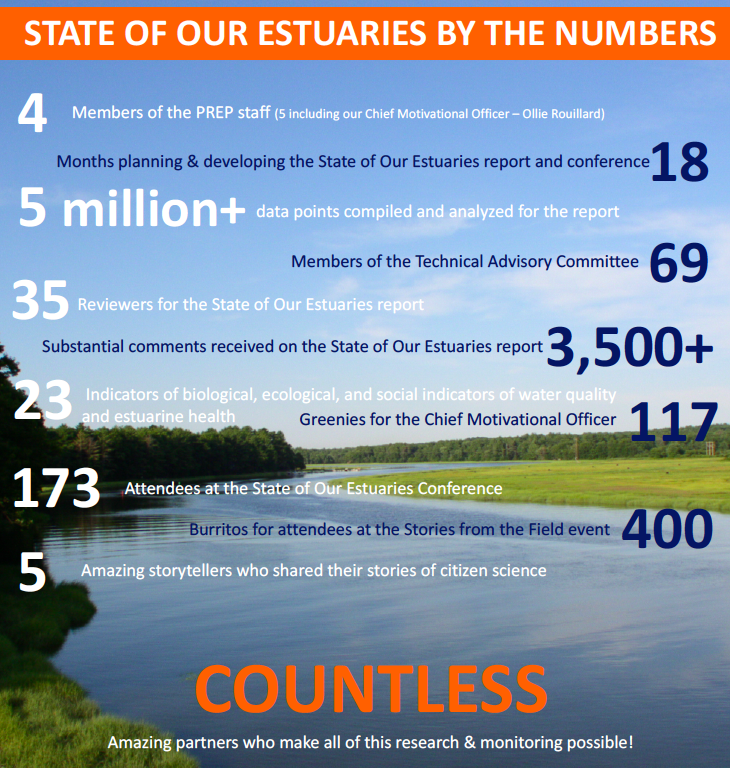|
On Friday, December 8th we released our new 2018 State of Our Estuaries report: a comprehensive report card detailing the health of the Great Bay and Hampton-Seabrook estuaries using 23 environmental, management and social indicators. Our estuaries are valuable ecosystems that provide a multitude of economic services we rely on. They help protect us from flooding and storm surges during storms; clean and filter pollutants from the water; salt marshes absorb and store more excess human-produced carbon than any other ecosystem on earth…and the list goes on.
Every five years to develop this report, we go through an extensive, collaborative process of analyzing the more than 5 million data points we and our partners collect over that period of time. By looking at this data along with historic data we are able to see if there are any trends – positive or negative – that tell us how things are going in these important ecological systems. What we know is that our estuaries have declined and are becoming less resilient in the face of growing pressures. Our clam and oyster populations have dropped by 90%, and half our eelgrass has disappeared; these are three of the most critical habitats underpinning our entire estuarine systems. Invasive plant and animal species, diseases and nuisance algae are on the rise as water temperatures continue to increase, making residence here in NH more comfortable to a range of troublesome actors and adding to an uncertain future for our estuaries. So what do we do about this? This is a question we are often asked, and some of the pressures facing our system are things we have control over like pollutant loads, while others such as warming temperatures we have less immediate control over. On the flip side of this negative news, there are some very positive things happening. A number of municipalities across the region have invested in upgrades to our public water and sewer systems, in a targeted effort to reduce pollutants. In addition, a number of communities have improved local regulations and policy to reduce water runoff and to protect natural lands that provide free filtering for polluted waters running into our rivers and streams. Also, communities are partnering with their conservation commissions, private landowners, local and regional land trusts and state and national conservation organizations to conserve land in its natural state for water quality, habitat for wildlife and recreation opportunities for residents. Our answer is simple: we know what we need to do, we just need to keep at it, scale it up and keep making the connections between our personal actions and how that plays out at a higher level. We need to focus efforts on reducing widespread non-point source pollution – the kind that comes from multiple sources across the landscape – such as from pet waste, spilled chemicals that wash into our waterways during storms, and leaking septic systems. Properly maintaining your septic system and applying the recommended amount of slow-release lawn fertilizers will help reduce pollutants from entering our waterways. For more information on what you can do at home or in your community to ensure a healthy and vibrant future for our estuaries, communities and region, please visit: www.stateofourestuaries.org to learn more. We applaud all of our partners and communities who are already working so hard on these challenges. Together we can and are making a difference for healthy and clean waters and estuaries into the future. Kalle Matso – Coastal Scientist |

